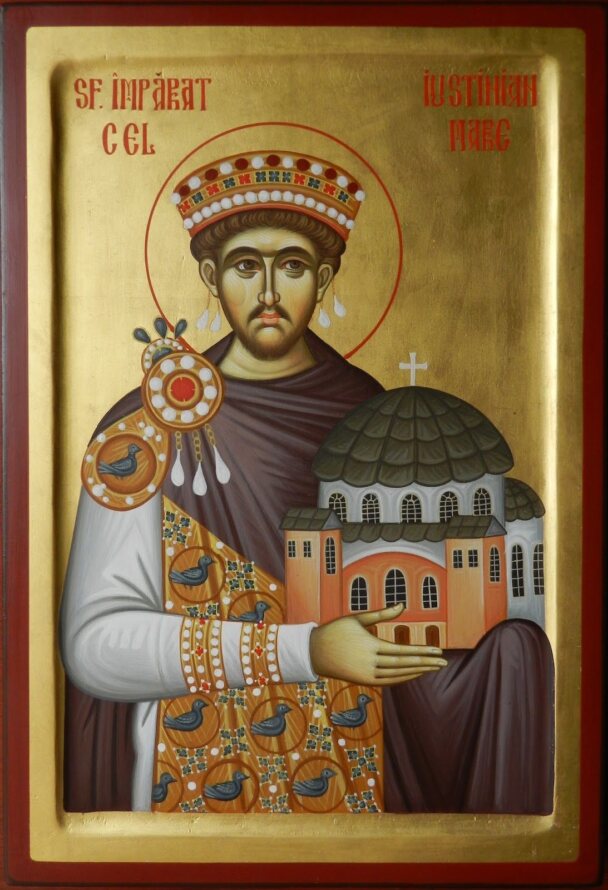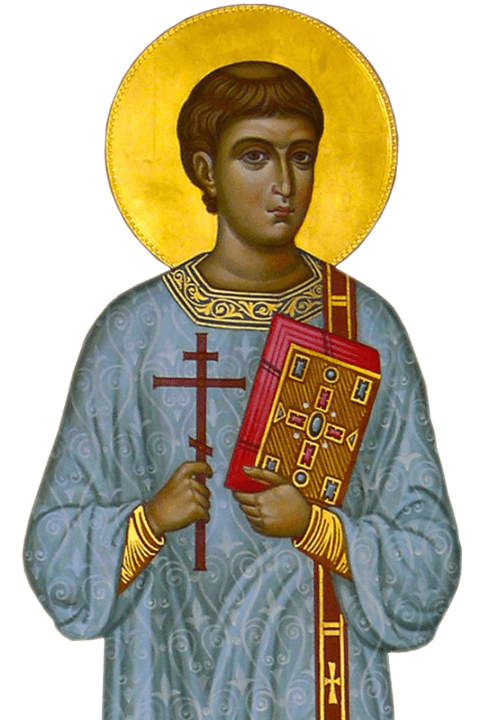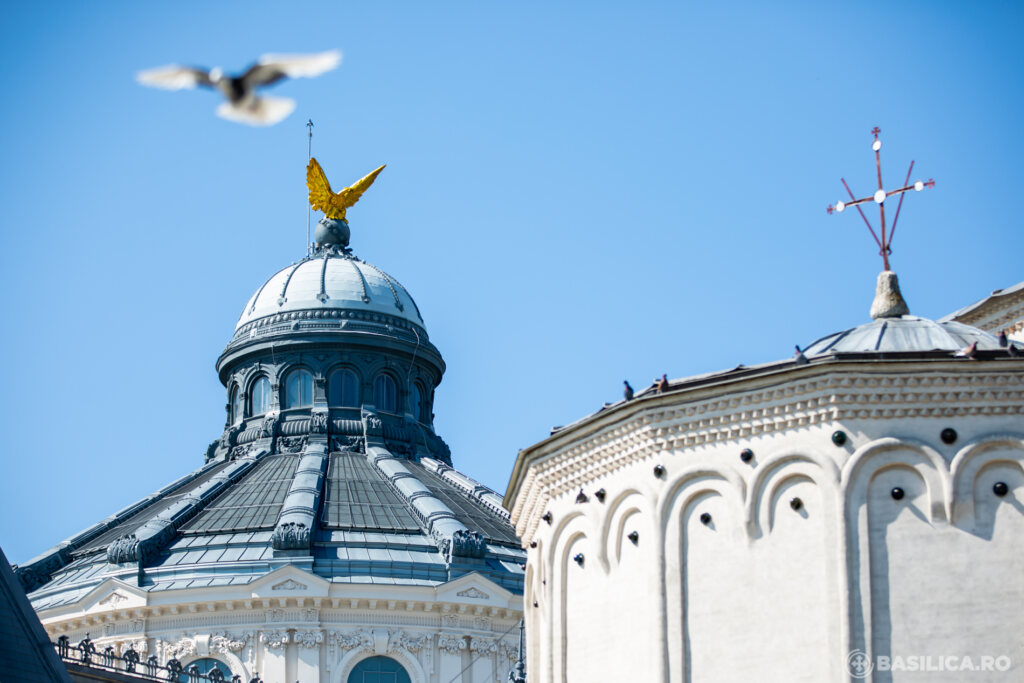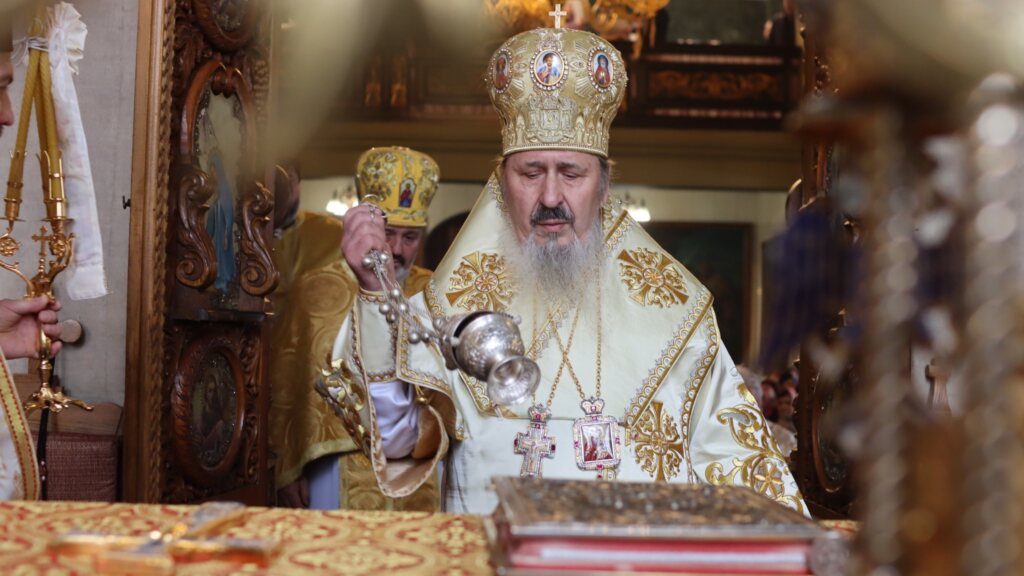The Transfer of the Relics of the Holy Protomartyr Stephen
The Transfer of the Relics of the Holy Protomartyr Stephen from Jerusalem to Constantinople took place about the year 428
After the holy Protomartyr Archdeacon Stephen was stoned by the Jews, they left his holy body unburied to be devoured by the beasts and birds. After a day and a night the renowned Jewish teacher of the Law, Gamaliel sent people to take up the body of the Protomartyr. Gamaliel buried him on his own property, in his own tomb, not far from Jerusalem.
When Lord’s secret disciple Nicodemus died, Gamaliel also buried him near the grave of Saint Stephen. Afterwards Gamaliel himself, who had been baptized with his son Abibas, was buried near the grave of the Protomartyr Stephen and Saint Nicodemus.
In the year 415 the relics of the saint were uncovered in a miraculous manner and solemnly transferred to Jerusalem by Bishop John and the bishops Eutonius of Sebaste and Eleutherius of Jericho. From that time healings took place from the relics.
Afterwards, during the reign of holy Emperor Theodosius the Younger (408-450), the relics of the holy Protomartyr Stephen were transferred from Jerusalem to Constantinople and placed in the church of the holy deacon Laurence (August 10). When a church dedicated to the Protomartyr Stephen was built, the relics were transferred there on August 2. Saint Stephen’s right hand is preserved in the Serapionov chamber of the Trinity-Sergius Lavra.
Troparion — Tone 4
Your relics have risen from the depths of the earth, / like a treasury for the immortal life of all of creation. / The Church, rejoicing in the grace that she receives from them, / duteously honors you, Protomartyr Stephen. / Preserve us from error and heresy by your intercession!
Righteous Gamaliel
Righteous Gamaliel was a Pharisee, a doctor of the Law (Acts 5:34), and the teacher of Saint Paul (Acts 22:3).
In the year 415, Gamaliel appeared to a priest named Lucian. He was a tall, venerable man with a long white beard. He was dressed in white clothing which was edged with gold and marked with crosses, and held a gold wand in his hand.
Gamaliel called Father Lucian by name three times, then told him to go to Jerusalem and inform Bishop John to open the tomb where his relics and those of other saints were resting. The priest asked the stranger who he was.
“I am Gamaliel, who instructed the apostle Paul in the Law,” he replied. Then he told the priest where to find the relics of Saint Stephen. He also revealed that he had taken Saint Stephen’s body and laid it in his own tomb after it had been lying exposed for a day and a night.
Gamaliel also mentioned that Righteous Nicodemus was buried at the same spot. “I received him into my house in the country,” he said, “and maintained him there until the end of his life. After his death, I buried him honorably near Stephen.”
Righteous Gamaliel informed the priest that he and his twenty-year-old son Abibas were also buried there. Father Lucian was afraid to believe this vision right away, lest it be a temptation from the Evil One. However, when Righteous Gamaliel appeared again and commanded him to obey his instructions, he did so.
A monk named Migetius also had a vision of Righteous Gamaliel and told Father Lucian to search for the relics in a place called Debatalia. When the relics were uncovered, an ineffable fragrance was noticed.
The relics of Saints Stephen, Gamaliel, Abibas, and Nicodemus were transferred from Jerusalem to Constantinople in 428 and placed in the church of the Holy Deacon Laurence (August 10).

Emperor Justinian
The emperor gave orders to build ninety churches for the newly-converted, and he generously supported church construction within the Empire. His finest structures of the time are considered to be St. Catherine’s Monastery at Sinai, and the church of Hagia Sophia at Constantinople. Under Saint Justinian many churches were built dedicated to our Most Holy Lady Theotokos. Since he had received a broad education, Saint Justinian assiduously concerned himself with the education of clergy and monks, ordering them to be instructed in rhetoric, philosophy and theology.
The right-believing sovereign devoted much attention and effort to the struggle with the Origenists of his time, who then were reviving the Nestorian heresy. To counter their heretical speculations, the Church hymn “Only-Begotten Son and Immortal Word of God, Who for our salvation…” was composed, and Justinian commanded that it be sung in the churches. From that time to the present day, this hymn is sung at the Divine Liturgy before the Small Entrance after the second Antiphon.
At the command of the sovereign, the Fifth Ecumenical Council was convened in the year 553, censuring the teachings of Origen and affirming the definitions of the Fourth Ecumenical Council at Chalcedon. He also attempted to secure religious unity within the Empire through his (unsuccessful) dialogues with the non-Chalcedonians.
The holy Emperor Justinian wished to have orderly rule and law within the realm. Under his guidance and supervision a complete compendium of Roman law was compiled. It has come down to us as a law codex known as “the Justinian Codex.”
In his personal life, Justinian was strictly pious, and he fasted often. During Great Lent he would not eat bread nor drink wine. He is also remembered for promoting the idea of “symphony” between church and state. The Emperor Justinian died in the year 565.

Tr by oca.org






